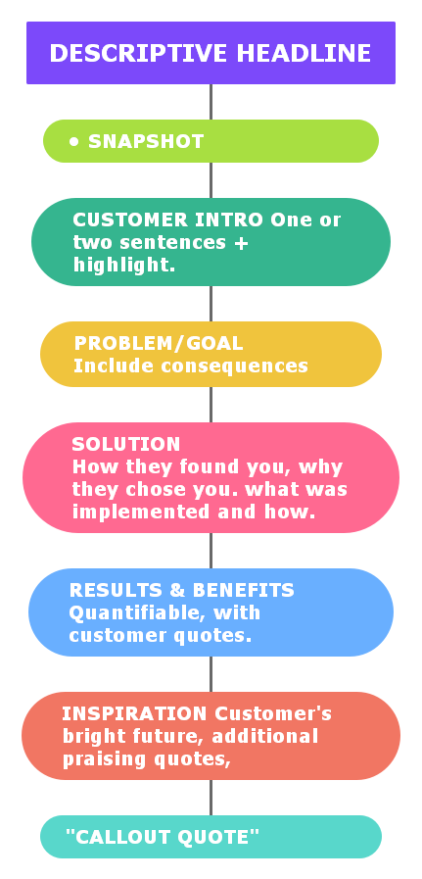how to Do a Case Study
What do you mean by a case study?
A case study is a research method used to investigate a subject in-depth. It involves gathering and analyzing detailed information about a specific case or situation to understand its complexities. Case studies are common in academic research, business, and psychology, among other fields. They provide a detailed account of a particular event, person, or group, showcasing real-life examples and allowing researchers to draw conclusions based on the data collected.
How to approach a case study?

Image Source: edrawmind.com
Approaching a case study involves several steps to ensure a comprehensive and detailed analysis of the subject. The first step is to define the research question or problem you want to address with the case study. This will guide your research and analysis throughout the process. Next, gather relevant data and information about the case, using various sources such as interviews, surveys, documents, and observations. Analyze the data collected to identify patterns, trends, and relationships that can help answer the research question.
After analyzing the data, develop a clear and coherent narrative that presents the findings of the case study. This narrative should highlight the key points and insights gathered from the research, providing a thorough understanding of the subject. Finally, draw conclusions and make recommendations based on the findings of the case study, offering insights and implications for future research or practice in the field.
What is known about case studies?
Case studies are known for their in-depth and detailed analysis of a specific case or situation. They provide a rich source of information and insights that can help researchers understand complex issues and phenomena. Case studies are often used to explore real-life examples, allowing researchers to apply theoretical concepts to practical situations. They are also valuable for generating hypotheses and theories, as well as testing and refining existing theories.
Case studies can take various forms, including descriptive case studies that provide a detailed account of a single case, exploratory case studies that investigate a new phenomenon, and explanatory case studies that seek to understand the reasons behind a particular event or outcome. Regardless of the type, case studies are valuable research tools that offer a unique perspective on a subject and contribute to the body of knowledge in a field.
Solution to conducting a case study
Conducting a case study requires careful planning and attention to detail to ensure a successful outcome. To conduct a case study effectively, follow these steps:
1. Define the research question or problem you want to address with the case study.
2. Identify the case or situation you will study, ensuring it is relevant and provides valuable insights.
3. Gather data and information about the case from various sources, including interviews, surveys, documents, and observations.
4. Analyze the data collected to identify key patterns, trends, and relationships that can help answer the research question.
5. Develop a narrative that presents the findings of the case study in a clear and coherent manner.
6. Draw conclusions and make recommendations based on the findings, offering insights and implications for future research or practice.
Information about conducting a case study
When conducting a case study, it is essential to consider the following factors:
1. Choose a relevant and interesting case that provides valuable insights and contributes to the existing body of knowledge.
2. Use a variety of data collection methods to gather comprehensive and reliable information about the case.
3. Analyze the data systematically, looking for patterns, trends, and relationships that can help answer the research question.
4. Present the findings of the case study in a clear and concise manner, highlighting key points and insights.
5. Draw conclusions based on the data collected, offering recommendations and implications for future research or practice.
How to do a case study effectively
To do a case study effectively, follow these tips:
1. Start by defining the research question or problem you want to address with the case study.
2. Choose a relevant and interesting case that provides valuable insights and contributes to the existing body of knowledge.
3. Gather data and information about the case from various sources, using a combination of methods such as interviews, surveys, documents, and observations.
4. Analyze the data systematically, looking for patterns, trends, and relationships that can help answer the research question.
5. Develop a narrative that presents the findings of the case study in a clear and coherent manner, highlighting key points and insights.
6. Draw conclusions based on the data collected, offering recommendations and implications for future research or practice.
Conclusion
Conducting a case study is a valuable research method that allows researchers to investigate a subject in-depth and gain insights into complex issues and phenomena. By following the steps outlined in this article and considering the tips provided, you can conduct a case study effectively and contribute to the body of knowledge in your field.
FAQs
1. What is the purpose of a case study?
A case study is used to investigate a subject in-depth and gain insights into complex issues and phenomena.
2. How do you choose a case for a case study?
Choose a relevant and interesting case that provides valuable insights and contributes to the existing body of knowledge.
3. What data collection methods can be used in a case study?
Data collection methods for a case study may include interviews, surveys, documents, and observations.
4. How to analyze data in a case study?
Analyze the data systematically, looking for patterns, trends, and relationships that can help answer the research question.
5. How to present the findings of a case study?
Present the findings of the case study in a clear and coherent manner, highlighting key points and insights.
6. What are the key steps in conducting a case study?
The key steps in conducting a case study include defining the research question, gathering data, analyzing the data, developing a narrative, and drawing conclusions.
7. Why are case studies important in research?
Case studies are important in research because they provide detailed insights into real-life examples and contribute to the body of knowledge in a field.
how to do a case study







